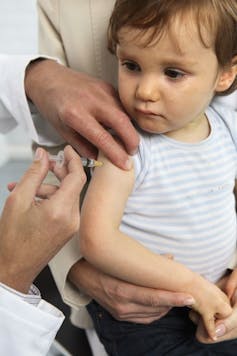We assess risk every day. But very few of us receive any formal training in the requisite mathematics and statistics, and, partly as a result, poor decisions are made, both by individuals and governmental bodies.
Evolutionary biologist Richard Dawkins suggests we may be neurologically ill-equipped to make the sort of decisions called for by modern society; and Nobel prize-winning behavioural economist and psychologist Daniel Kahneman makes it clear in his book Thinking Fast and Slow that making careful (slow) judgements is a very complicated mental process.
Many have presumed that, in the wake of the threat of terrorism, not to mention recent questions about the safety of airliners, that air travel remains a rather dicey proposition.
At least one dear colleague of ours refuses to fly out of fear of accidents. When one of us suggested that he simply buy some noise-cancelling headphones, play some Bach and dream his way to his destination, he replied that headphones would impede his ability to hear malfunctions in the aircraft.

It’s surprising, given the prevalence of this particular fear, that so little attention has been given to the recent announcement that four full years have elapsed without a single airline fatality in the US, and 2012 was the safest year in global flight since 1945.
The worldwide 2012 fatality figure (475 deaths) was less than half the figure in 2000, and most accidents occur in Africa where it is reasonable to expect significant improvement as economies grow.
With regards to fear of terrorist attacks, German psychologist Gerd Gigerenzer has estimated that, in the first year after the September 11 terrorist attacks in 2001, 1,500 Americans died in car accidents because they elected to drive rather than fly (due to fear of dying in a sabotaged plane).
In other words, six times as many Americans needlessly died in cars in the year after September 11 than died in hijacked planes on September 11.
Similar behaviour can be seen in the fanatical and often counter-productive measures taken by parents to protect children. In 1970, 67% of American children walked or biked to school, but today only 10% do, in part out of fear of abductions.
But the number of cases of true child abduction by strangers (as opposed to, say, a divorced parent) has dwindled to only about 100 a year in the US today.
Even if one assumes that all of these children are harmed (which is not by any means true), this is still only about 1/20 the risk of drowning and 1/40 of the risk of a fatal car accident.
Such numerically absurd thinking can also be seen in the recent international hysteria over childhood vaccinations.

This mania stemmed from a 1998 study in the British medical journal Lancet, which claimed that vaccination shots with a certain mercury compound may be linked to autism.
But a few years later the finding was completely debunked, and in 2011 the original study was exposed as an elaborate fraud.
In the intervening years, many thousands of parents in both the US and the UK jumped on the anti-vaccination bandwagon and, tragically, several childhood diseases began to re-appear.
Last year, measles outbreaks rose to an 18-year high in England and Wales, while in 2011 California experienced its worst whooping cough epidemic in 60 years.
In spite of these grim statistics and pleas from health agencies, many parents still resist vaccinations for their children.
Just as absurd is the current anti-smart-meter movement.
Many in the US, Canada, Australia and elsewhere are convinced, without any solid scientific evidence, that smart meters pose a dire threat to health, because of their occasional transmissions of usage data via cell phone networks.
Yet even if one stands less than one metre from a smart meter when it broadcasts its data, microwave exposure is 550 times less than standing in front of an active microwave oven, and 1,100 times less than holding an active cell phone at your ear.
Cell phone usage itself is thought by many to be dangerous. But in 2010, a 13-nation study commissioned by the World Health Organization found at most a very sketchy and partially contradictory link between cancer risk and heavy cell-phone usage.

Along this line, concerns that mobile phone usage by pregnant mothers endangers their fetuses are wildly exaggerated.
A related example is the worldwide reaction to the 2011 Fukushima reactor accident. This was truly a horrible incident, and we do not wish to detract from the environmental devastation that occurred. Yet no fatalities resulted.
Subsequently, the German government decided to discontinue its nuclear program. Was this decision made after a sober calculation of relative risk and costs between different forms of energy? Or as a response to populist political pressure?
This decision inevitably will mean more consumption of fossil fuels, in an era when concern about global warming is, if anything, more acute than ever.
And most of the arguments against nuclear power are based on political philosophy rather than science.
Similar remarks can be made about hyped-up fear of genetically modified organisms (GMOs), global warming scepticism, disbelief in evolution, and many other current issues.
We are all susceptible to being swayed by the whims of social movements around us, but it is clear that higher-quality education in mathematics and statistics is essential in forging a public mind that is better at assessing relative risk and cost.
Indeed, a solid case can be made that a good course in reasoning and statistics should be a required part of a high-school education, at least in the developed world and probably in the developing world as well.
But better news reporting is also needed from the scientific news establishment.
Many of the recent manias would not have gotten off the ground had a more sober-minded press seen through the quasi-scientific smokescreens.
A version of this article first appeared on Math Drudge.

